How to Price Dropshipping Products for Maximum Profit in 2025
I'm looking for...
Struggling to set the right price for your dropshipping products? A weak pricing strategy can eat into your profits and hurt your business.
This guide reveals how to price dropshipping products effectively, ensuring higher margins and a sustainable business.
You’ll learn about proven pricing strategies, formulas, and tips to stay competitive while maximizing your profits. Ready to boost your dropshipping success? Let’s dive in.
Create Your Online Store in just 5 Minutes – For Free
Pick your niche, our AI builds your store, add 10 winning products and we teach you how start selling today. Start picking your niche
What You’ll Learn
Top 21 Dropshipping Pricing Strategies To Have In Mind
How It Works: Calculate total costs, add profit margin, and set a selling price.
Example: Handmade jewelry costing $5 with a 300% markup results in a $15 retail price.
How It Works: Set different markups for low, medium, and high-cost products to balance profits.
Example: 50% markup for items under $10, 15% markup for $300+ items.
How It Works: Use supplier recommendations to set a fixed price and avoid price wars.
Example: Selling branded electronics using the suggested price to maintain consistent margins.
How It Works: Set prices ending in 9, 7, or 5 to make them appear lower and attract buyers.
Example: Pricing a vase at $49.99 instead of $50.
How It Works: Offer bundles with discounts to increase order value.
Example: Buy a moisturizer and cleanser with a 40% discount on both.
How It Works: Start with low prices to attract customers, then gradually increase.
Example: Netflix’s low-cost DVD subscription model.
How It Works: Offer free products but charge for shipping to cover costs.
Example: Free phone cases with a $7 shipping fee.
How It Works: Set higher prices to reflect exclusivity and high quality.
Example: Luxury watches priced at $500 to emphasize craftsmanship.
How It Works: Set prices based on what customers perceive as the value.
Example: Eco-friendly water bottles sold at $30 due to their sustainable appeal.
How It Works: Low-cost items with smaller margins but high sales volume.
Example: Keychains sold for $5 with $1 sourcing cost.
How It Works: Moderate pricing with balanced profits and wide appeal.
Example: Fitness bands sourced at $7 and sold for $20.
How It Works: Higher prices for premium items with larger profit margins.
Example: Security cameras sourced at $50, sold for $150.
How It Works: Adjust prices in real-time based on competition and demand.
Example: Amazon lowering prices automatically when competitors drop theirs.
How It Works: Double the wholesale cost to determine the retail price.
Example: Leather wallets bought for $15, sold at $30.
How It Works: Offer steep discounts for a limited time to boost conversions.
Example: 50% off for 12 hours to create urgency.
How It Works: Display a higher original price next to a discount.
Example: Listing a product for $49.99 but showing original price as $99.99.
How It Works: Offer recurring deliveries at a discounted rate.
Example: Skincare kits with monthly subscriptions and 20% savings.
How It Works: Sell a product at a loss to attract customers and upsell.
Example: Phone cases sold at $3 to upsell screen protectors.
How It Works: Set different prices based on region and demand.
Example: Smartwatch priced at $50 in Asia but $70 in North America.
How It Works: Offer discounts for pre-orders to secure sales early.
Example: Sneakers offered at 15% off before launch.
How It Works: Encourage higher-priced purchases and complementary add-ons.
Example: Upsell premium earbuds and cross-sell charging cases.
What Is A Pricing Strategy?
Pricing strategy is a methodological approach that answers your question: How to price my dropshipping products?
It is an indicator to potential customers about how much you appreciate your brand or product.
Hence, it’s one of the first things that can sway a customer’s decision to buy your product or not. As such, it should be calculated precisely.
A pricing strategy considers segments, ability to pay, market conditions, competitor actions, trade margins, and input costs.
What Is The Formula For Calculating Prices For Dropshipping Products?
Add a percentage markup to your COGS to set your selling price.
Calculate your selling price based on desired profit margin.
Double the COGS to determine the selling price.
Apply a multiplier (usually 2x to 4x) to account for costs.
Add desired profit directly to your COGS.
Set the price just below a round number for perceived value.
Top 21 Dropshipping Pricing Strategies To Have In Mind
Below, I will discuss a few of the most common strategies that lead dropshippers to success.
1. Cost-Based Pricing
In this pricing strategy, I first calculate total business costs, then add the given profit margin, and finally calculate the selling price.
Imagine you run a Shopify store selling handmade jewelry. To set your prices using cost-based pricing, you first calculate all your expenses.
This includes salaries and payments totaling $1,000, sourcing products at $500, platform fees of $100, shipping costs at $200, returns and refunds costing $50, bank and processing fees of $30, and software subscriptions of $120.
Adding these up, your total costs amount to $2,000. Next, you decide on a profit margin, say 20%.
So, you calculate the selling price by adding your profit margin to the total costs, resulting in a final selling price of $2,400. This method ensures all your expenses are covered and you make a profit.
1. Calculating costs (expenses)
In this calculation, you need to include your dropshipping expenses, like:
- Salaries and payments
- Sourcing products
- Platform fees
- Shipping
- Returns and refunds
- Bank and processing fees
- Software etc.
2. Profit margins
When setting profit margins, first, you think about making your products buyable! Here the balance is a win-win!
Don’t set them too high and deliver high prices; this is a lose-lose situation! Don’t set them too low; this is also a lose-lose situation! You can read more about profit margins in this post below.

For instance, the Vintage Pear store, which offers personalized jewelry, likely employs this pricing
Alternatively, with a fixed percentage markup strategy, you set your retail price at a certain percentage of the purchase price.
For instance, if you bought the product for $5 and applied a 300% markup, your retail price would be $15. To make the price more attractive to customers, you might set it at $14.99.strategy to ensure that its handcrafted pieces are priced to cover all operational costs and achieve its desired profit margin.
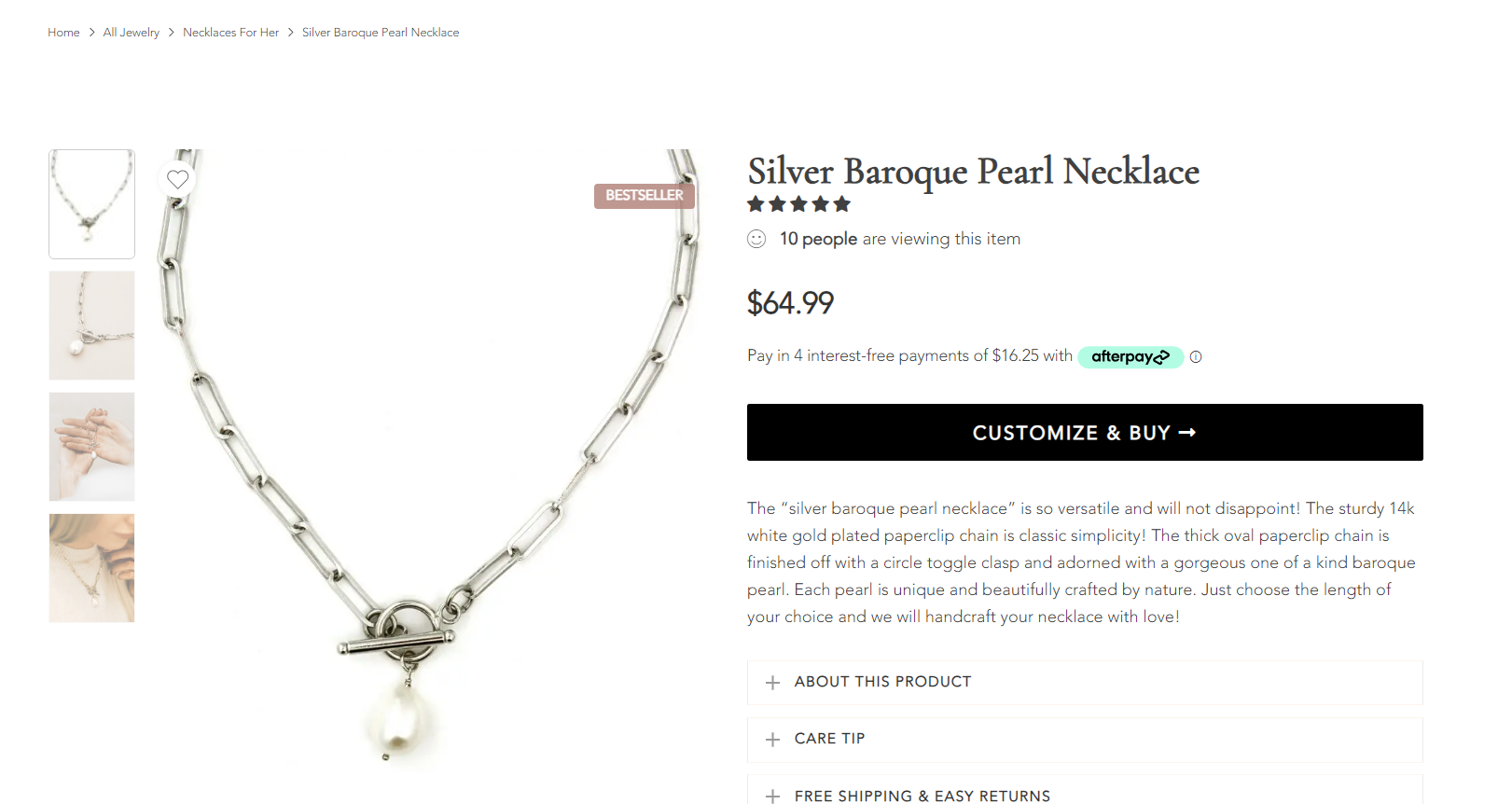
 Fixed Markup on Cost
Fixed Markup on Cost
There are two strategies you can consider using:
1. Fixed dollar markup strategy
A fixed dollar markup simply means adding a specific dollar amount to the product’s price at your supplier.
For example, let’s say that the product already costs you $5; you set a $10 profit margin per sale, which will make the retail price for your product $15, and by this, you can cover your business expenses.
The simplest way to calculate product pricing is by applying a percentage markup to the cost of goods.
The simplest way to calculate a product price with a markup percentage.
Example: If the COGS is $10 and the markup is 200%:
- COGS: Supplier price + shipping costs + any additional fees.
- Markup Percentage: The desired profit percentage (usually between 100% to 300% for dropshipping).
2. Fixed percentage markup strategy
With this strategy, you set your product’s retail price at a certain percentage of your purchase price.

For example, let’s say you purchased the product for $5. When you apply your profit margin to your supplier price, you get a $15 retail price. To make the price look low in customers’ eyes, you use a rounding price, like $14.99, and Bam 
Alternatively, with a fixed percentage markup strategy, you set your retail price at a certain percentage of the purchase price.
For instance, Hydro Flask adds a fixed markup to cover costs while maintaining competitive prices.
2. Tiered Markup on Cost
Tiered markup on cost is a pricing strategy that is most commonly used when the supplier has a variety of products ranging in value from low to high.
ANSWERED: How Many Products Should I Start With When Dropshipping With Shopify?
It allows you to avoid overpricing your expensive items while also profiting from your low-cost items.
You can create tiers or levels for your items so that items under $10 have a higher markup, let’s say 50%, while items between $300-500 have a lower markup, like 15%. You can even have multiple tiers.
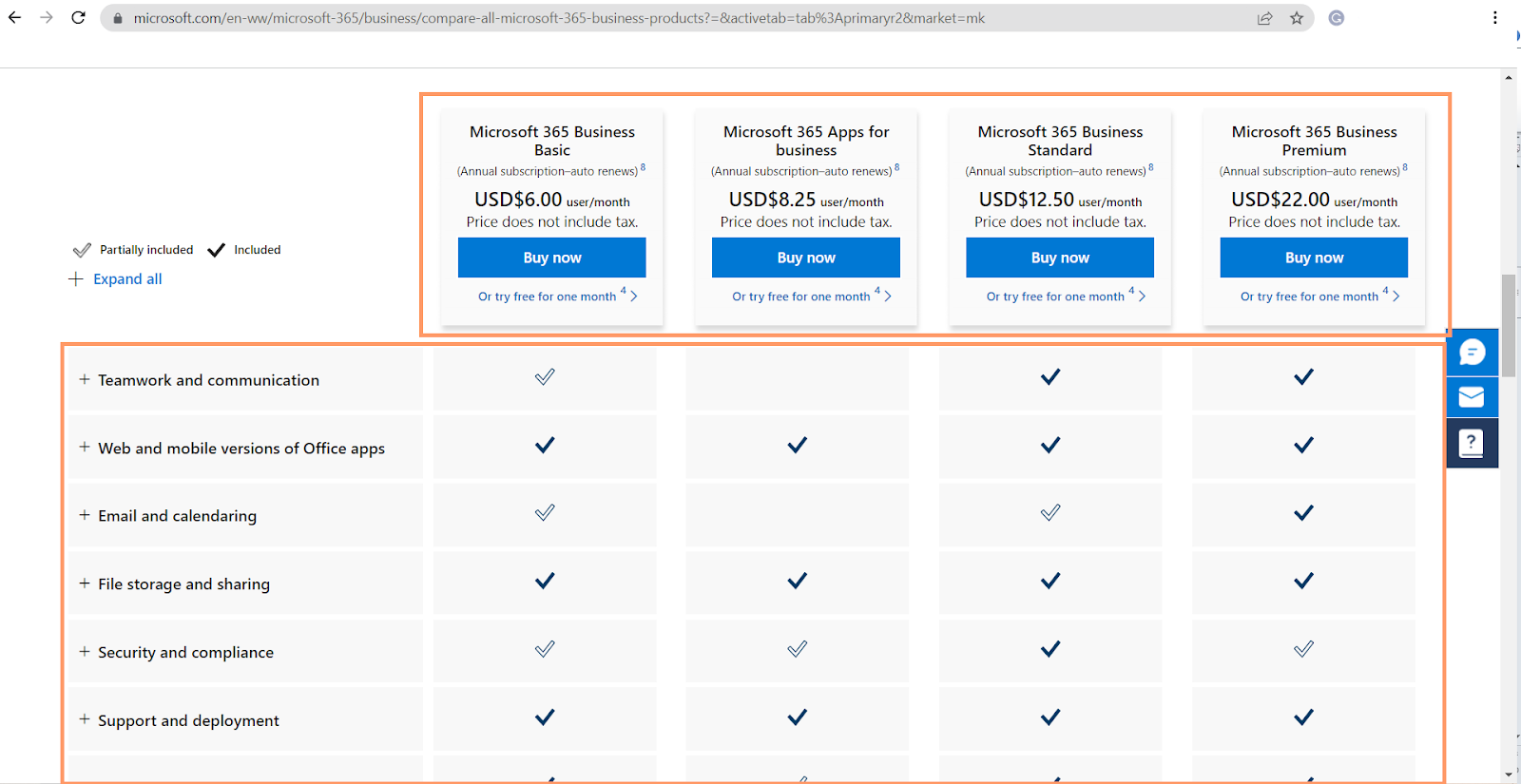
3. Manufacturer Suggested Retail Price (MSRP)
MSRP is another common strategy smaller retail shops use to avoid price wars while still making a decent profit.
It is a very suitable strategy for dropshipping beginners, where you set your prices best on suppliers’ given recommendations.

4. Psychological Dropshipping Pricing Strategy
Set the price slightly below a round number for psychological appeal.
Example: If the suggested price is $30:
Psychological pricing strategy lies in the “odd-pricing” method, where you set prices lower than the real price, using cents ending values, 5,7 or 9.
For example, instead of setting your price at $15, set it as $14.99 or $14.95.

Maybe your first thought about this is, “Okay, it’s the 21st century, and everybody knows it”, but believe me, it works!

If I sell home decor items, instead of pricing a vase at $50, I might price it at $49.99 to make it seem more affordable.
Hence, Zara frequently uses odd-even pricing to attract budget-conscious shoppers.

This psychological pricing strategy is effective for most consumer goods to make prices seem lower and for luxury items to imply better quality.
5. Bundle Pricing
Bundle pricing refers to offering a sales promotion to your customers. For example, customers can buy your product and a matching product and get a discount for both.
For example, “buy one, get the second piece for free,” or “buy all three pieces and get a 40% discount”.
This strategy can also be a way to lower your product’s retail price.
Bundle pricing can be an effective strategy for a Shopify store selling skincare products.
You might offer a promotion where customers can buy a moisturizer and get a cleanser for free or buy all three items in a skincare routine for a 40% discount.
This not only increases the perceived value but also encourages customers to purchase more.
For instance, SkinnyMeTea uses a bundle dropshipping pricing strategy to promote its products, making it a win-win for both the store and the customers. In fact, they have a separate category for bundles.
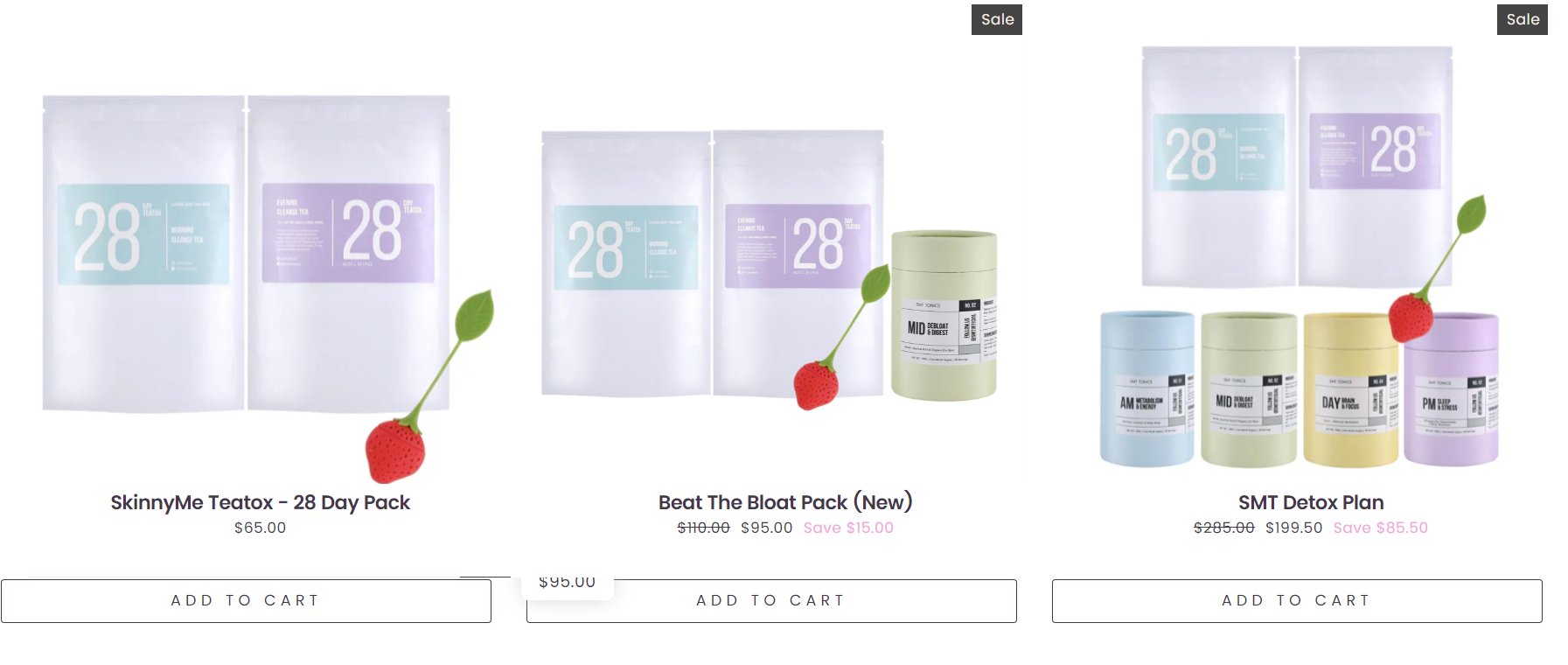
6. Penetration Pricing
It may be a smart move for you as a ‘fresh dropshipper” to the market to lower your prices below the competitors and gain market share quickly.
After you build brand awareness and increase your customer base, you can gradually raise your prices.
I find Netflix‘s idea about the dropshipping pricing strategies very inspiring.
They told customers, “If you can wait a day or two for your DVDs to arrive, you’ll get access to a huge movie library without any late fees.”
From the beginning, Netflix focused on making things easy and affordable to win over Blockbuster customers.
Back in 2000, Netflix let users rent four movies at a time with no due dates for just $15.95 a month.
This worked out to less than a dollar per DVD for regular movie watchers, while Blockbuster charged about $4.99 for a single three-day rental.
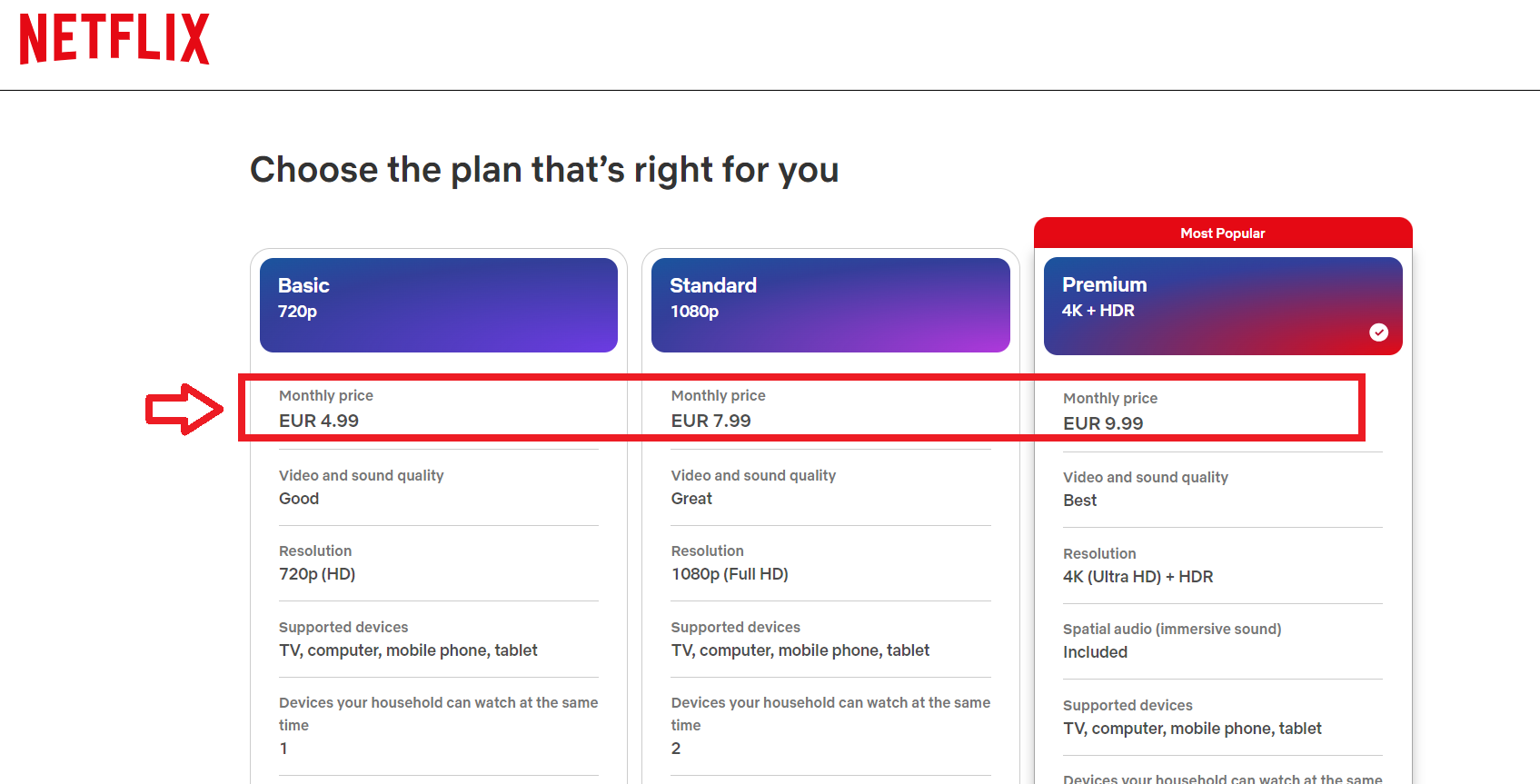
Netflix nailed the penetration pricing strategy. Sure, people sometimes grumble about Netflix subscription prices going up or their free trial ending.
But despite the occasional complaints, folks are generally happy to pay more for the constant stream of great content.

7. Free Plus Shipping Strategy
With the Free Plus Shipping strategy, you offer the product for free but charge customers for shipping.
For example, if I sell phone cases that cost me $2 each, I set the shipping fee at $7. This way, my costs are covered, and I make a $5 profit per sale.
In fact, AliExpress uses this strategy to attract more customers. You can find it here all the time.
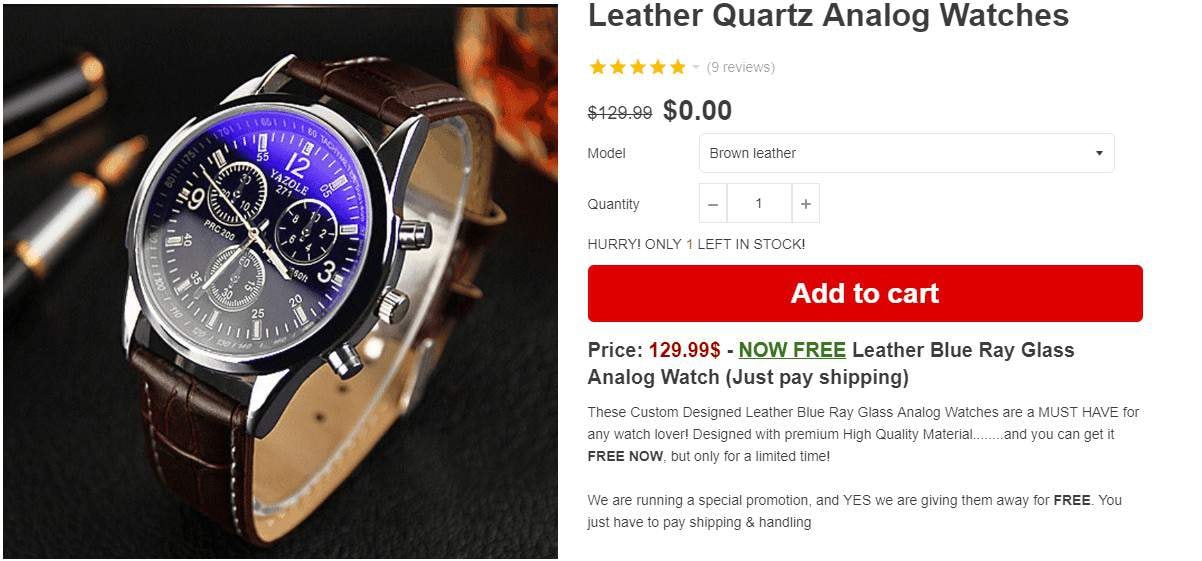
This is great for low-cost items where the perceived value justifies the higher shipping fee, such as phone accessories, small beauty products, and promotional items.
This approach helps keep the product price appealing while effectively covering shipping costs.
8. Premium Pricing
Premium Pricing means setting higher prices to reflect the high value and quality of the product.
For instance, if I sell luxury watches that cost me $100 to produce, I might price them at $500 to emphasize their top-notch materials and craftsmanship.
Stores like Nordgreen do this with their high-quality watches.

This strategy is perfect for high-quality or luxury items where customers are willing to pay more for exclusivity and superior quality, such as luxury goods, high-end electronics, and designer clothing.
This is a great way to achieve higher profit margins and build a prestigious brand image.
9. Perceived Value Pricing
Perceived Value Pricing is all about what customers think a product is worth rather than its actual cost.
For example, if I sell eco-friendly water bottles that cost $5 to produce, I might price them at $30 because of their sustainable materials and strong brand reputation.
S’well water bottles use this strategy, highlighting their eco-friendliness and stylish design.
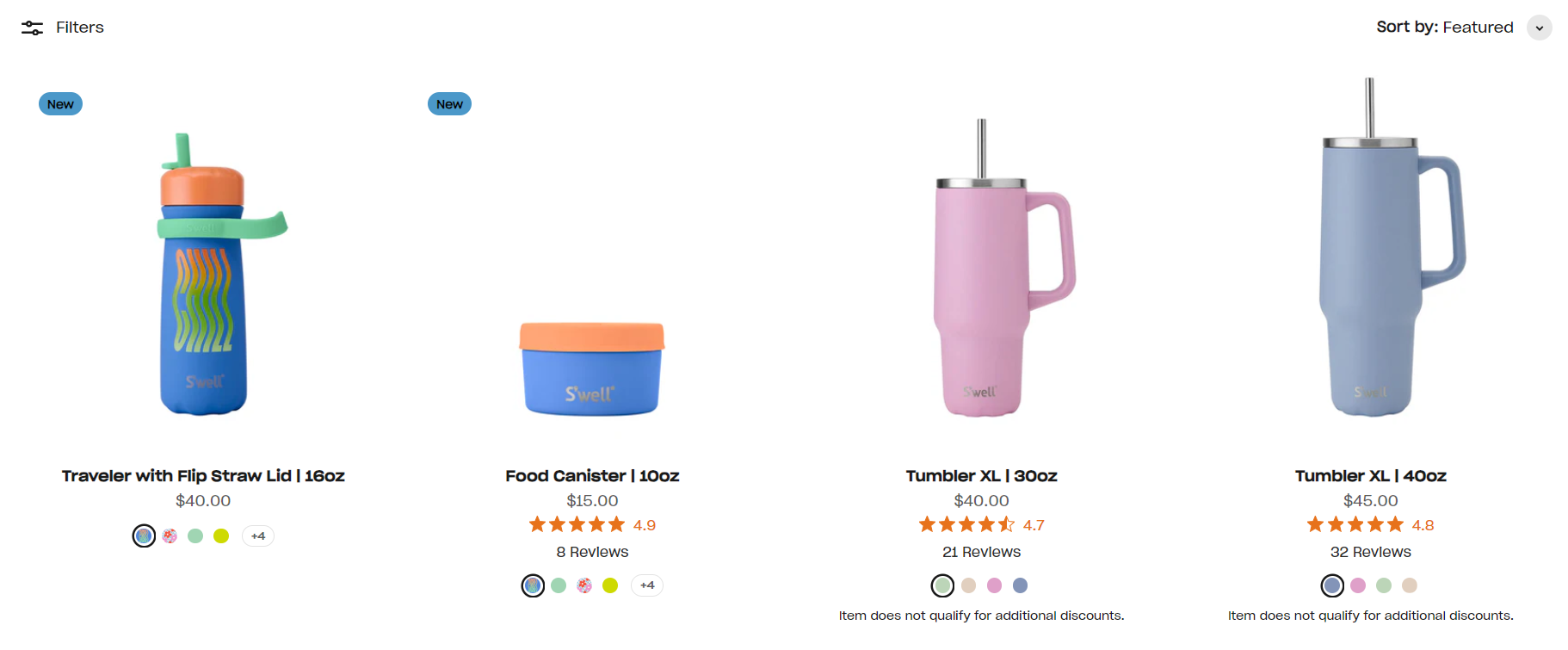
This works well for products with strong brand stories, innovative features, or unique benefits that customers highly value, like eco-friendly products, innovative gadgets, and health and wellness items.
It helps set a higher retail price based on perceived value.
Remember the Dior scandal?
As reported by the Wall Street Journal, this company was discovered to exploit workers by manufacturing bags at a small fraction of their retail price.
Official documents reveal that Dior paid a supplier just $57 to produce bags that retail for approximately $2,780, not including the cost of raw materials like leather.
10. Low-Ticket Product Dropshipping Pricing Strategy
Low-ticket products are priced to sell quickly with small profit margins but high volumes. And, it is a beneficial strategy when it comes to how to price dropshipping products.
For example, if I sell novelty keychains that cost $1 to source, I sell them for $5, making a $4 profit per item.
For instance, Wish offers many low-ticket items with small margins but high sales volumes.
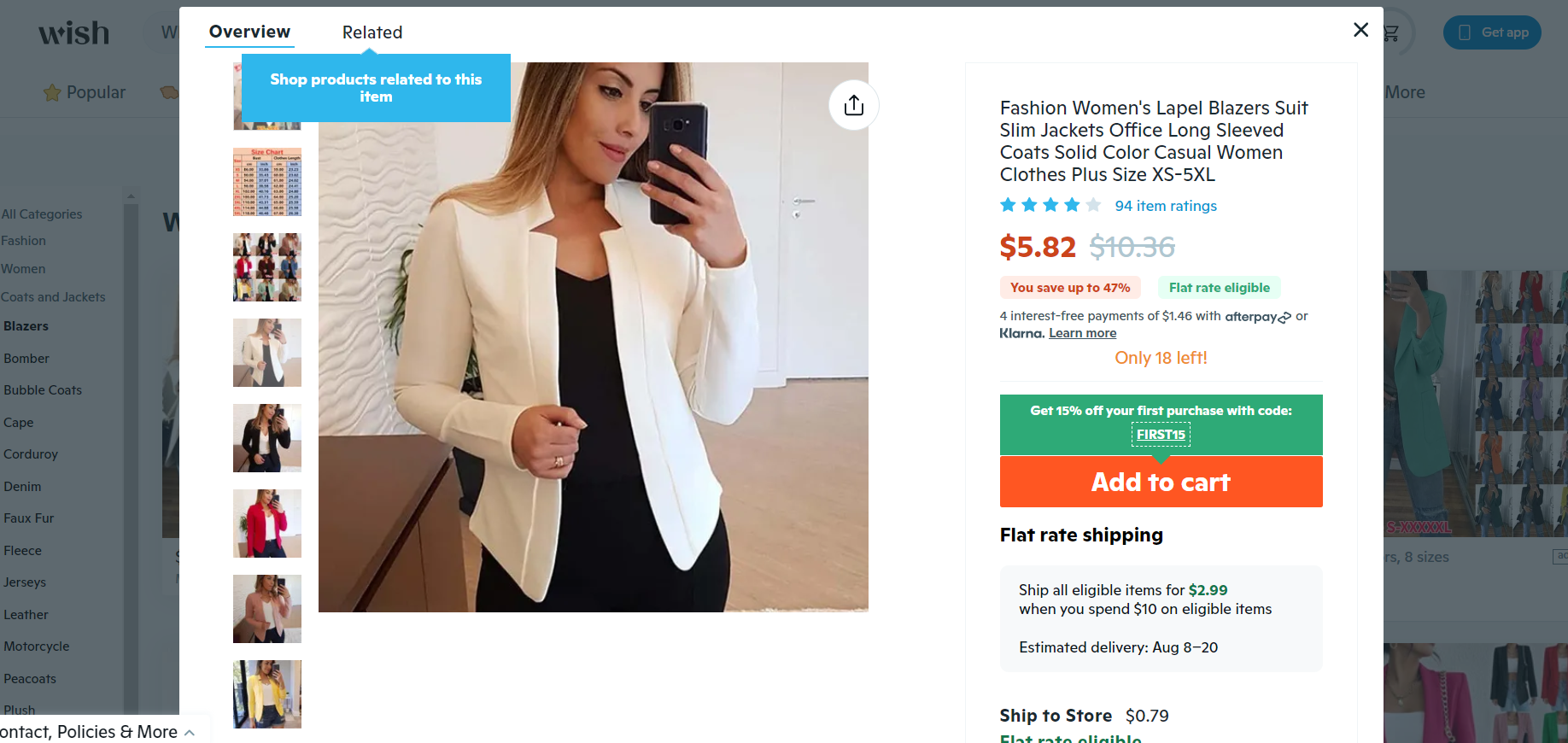
This strategy is perfect for impulse buying items that customers can purchase without much thought, such as small accessories, novelty items, and inexpensive gadgets.
This helps to maintain a low selling price while achieving a good profit margin through volume.
11. Medium-Ticket Product Dropshipping Pricing Strategy
Medium-ticket products have moderate pricing and profit margins, appealing to a broader market. If I sell fitness bands costing $7 to source and retail them for $20, I make a $13 profit margin.
Amazon products fall into this range, balancing affordability and profit. This strategy is ideal for products that offer good value and functionality, appealing to budget-conscious yet quality-seeking customers, such as fitness accessories, mid-range electronics, and kitchen gadgets.
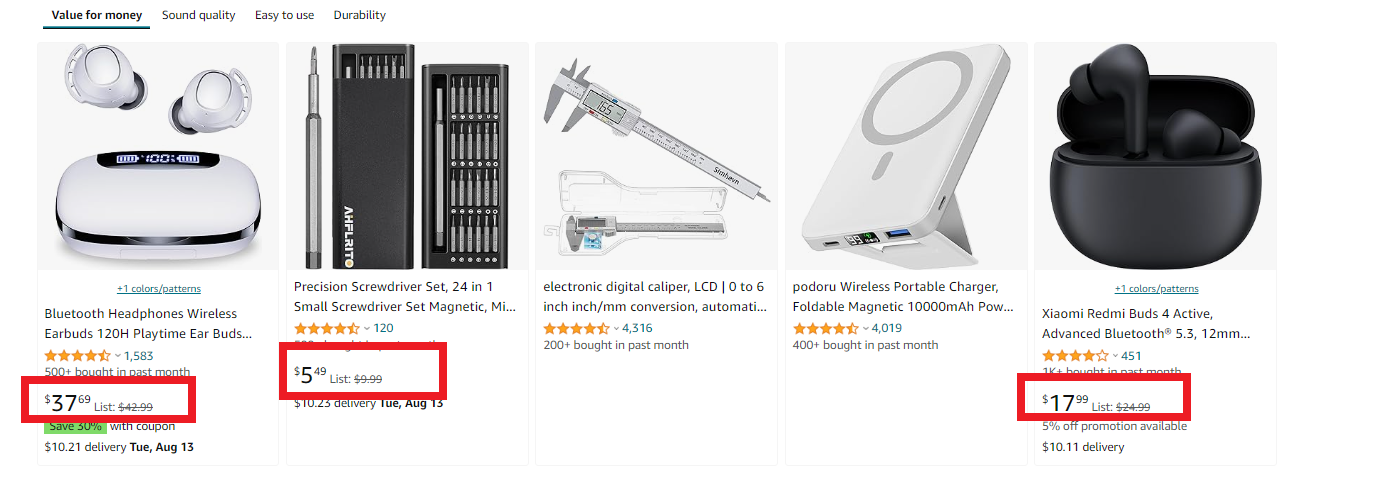
This pricing strategy helps in achieving a balanced average order value.
12. High-ticket Product Dropshipping Pricing Strategy
High-ticket products are priced higher with substantial profit margins, targeting customers willing to pay more for quality and features.
If I sell advanced home security cameras that cost $50 to source and retail for $150, I make a $100 profit margin.
One great example of a store that uses these dropshipping pricing strategies is BrandsGateway.
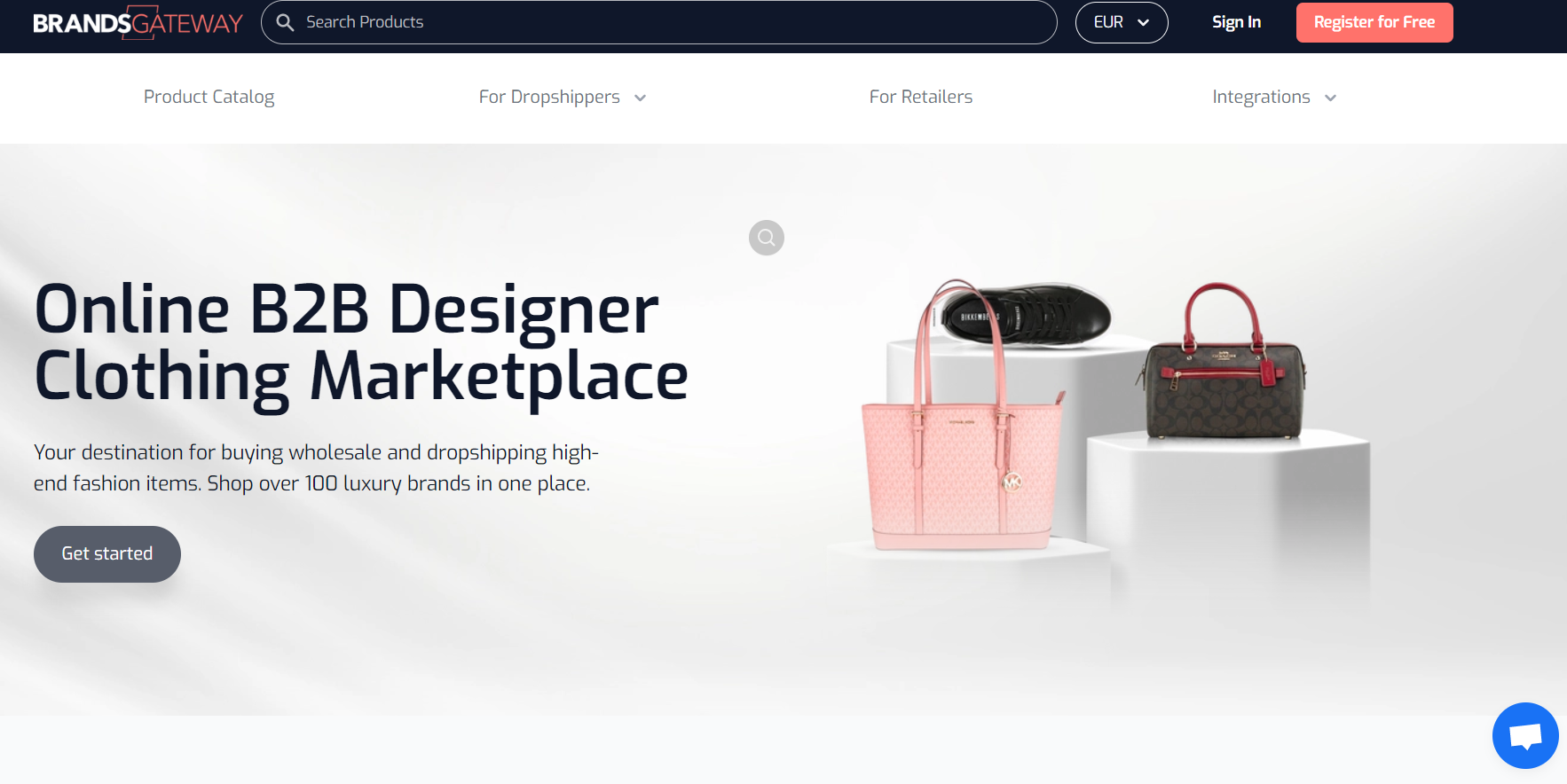
This strategy suits premium, feature-rich products that justify a higher price point due to their benefits and quality, such as advanced electronics, luxury home goods, and high-end apparel.
It helps set a solid pricing strategy for high-value items.
13. Dynamic Pricing Strategy
Dynamic pricing is a strategy where you adjust product prices in real time based on market conditions, competitor pricing, and customer behavior.
If I notice that my competitors drop their prices, I can respond by lowering my price just enough to stay competitive without sacrificing my profit margin.
Amazon is the king of dynamic pricing, adjusting prices on millions of products multiple times a day based on competitor activity, supply, and demand.
If a competitor lowers the price of a fitness tracker, Amazon’s system might automatically lower its price by 5-10% to stay competitive while maintaining profitability.

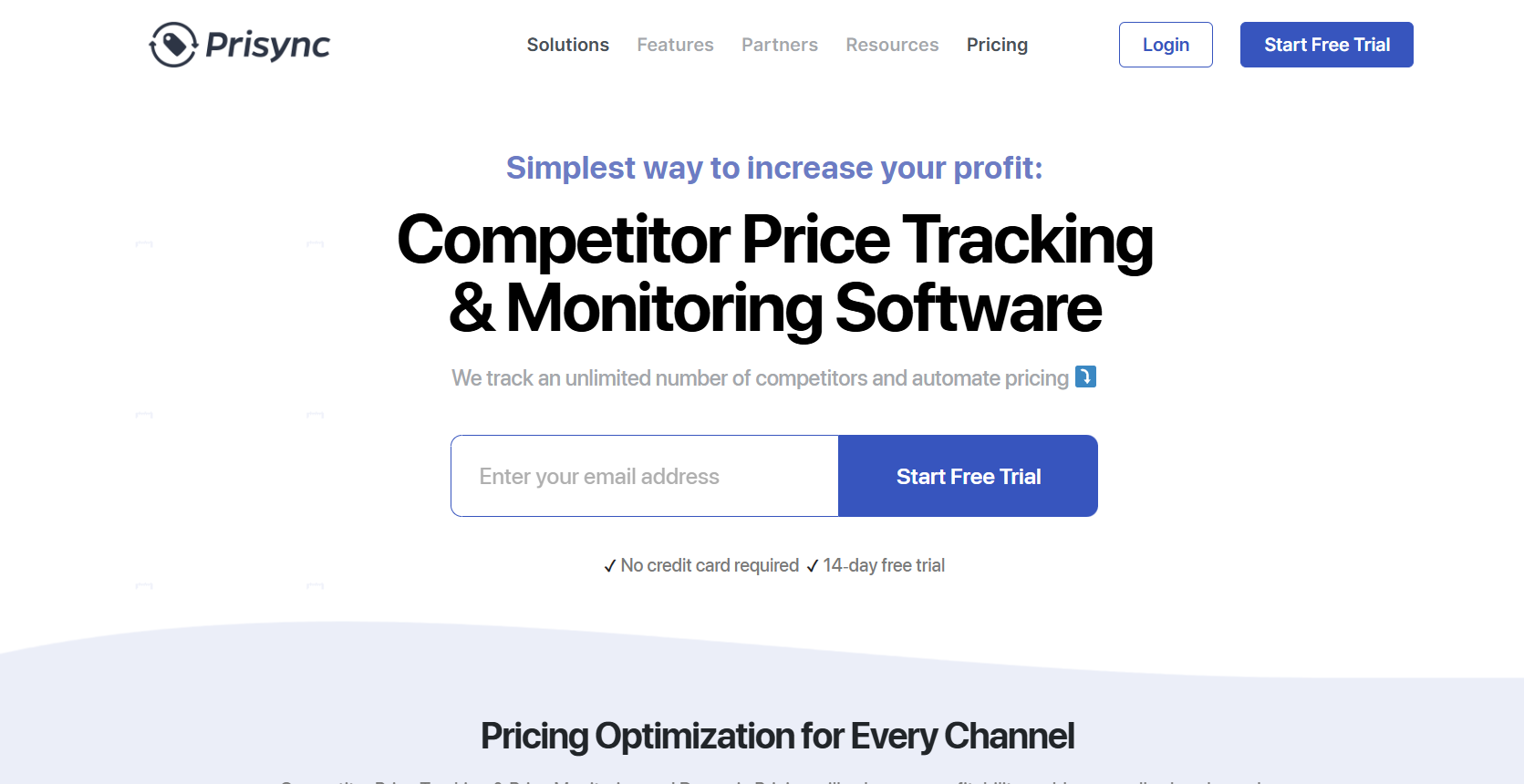
14. Keystone Pricing Strategy
Keystone pricing is the simplest way to set your price by doubling the wholesale cost to determine your retail price. While it’s a go-to strategy for many retail businesses, it’s not always the best choice for dropshippers because it doesn’t take into account perceived value or competitor pricing.

If I purchase a leather wallet for $15, keystone pricing suggests that I should set the retail price at $30. However, if I’m selling a premium, handcrafted wallet, I could easily charge $50 or more due to the higher perceived value and craftsmanship.
Double the COGS to determine the selling price.
Example: If the COGS is $15:

15. Flash Sale Pricing Strategy
Flash sale pricing focuses on offering steep discounts for a limited time to create urgency and encourage impulse buying.
This tactic works wonders when I want to clear out slow-moving inventory or create a buzz around new products. So, keep this in mind when wondering how to price dropshipping products.

If I’m dropshipping skincare products, I might run a “50% off flash sale for 12 hours” to boost sales. During this time, I could see a spike in conversions simply because customers feel the urgency to grab a deal before it disappeared. Amazon also leverages flash sales during its Prime Day events to drive millions of purchases within a short time.

16. Anchor Pricing Strategy
Anchor pricing plays with customer psychology by showing a higher original price (the anchor) next to a discounted price, making the discount look irresistible.
Customers naturally perceive the discounted price as a bargain, leading to increased conversions.

If I list a fitness tracker for $49.99 but display an “Original Price: $99.99”, the customer feels like they are getting a great deal. Even if the product was never sold at $99.99, the perceived value increases, and the customer is more likely to make a purchase.
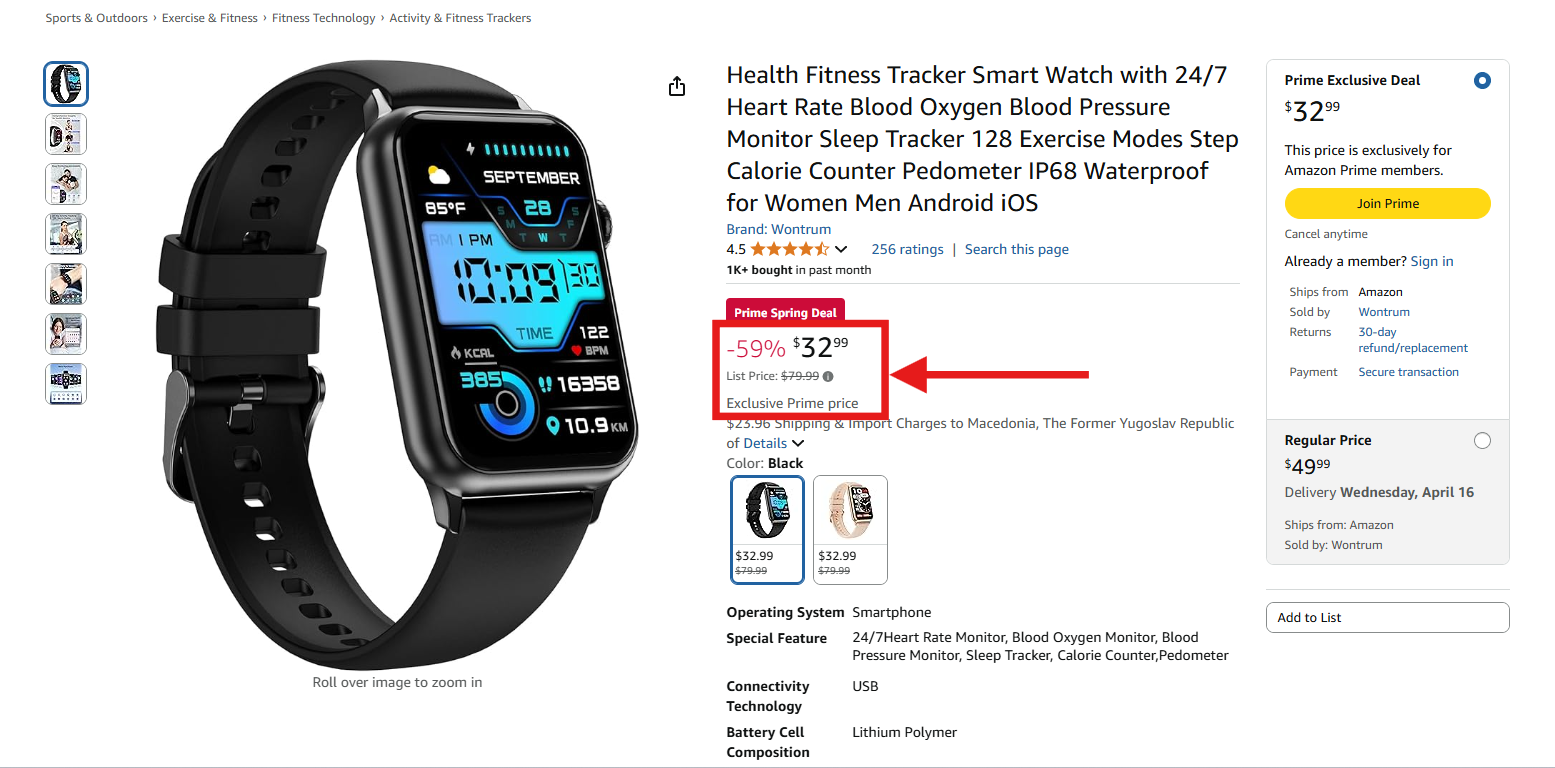

17. Subscription Pricing Strategy
Subscription pricing is a game-changer for recurring revenue and customer retention. This strategy works well for products that require regular replenishment, such as supplements, beauty products, or pet supplies.

Imagine selling skincare kits where customers receive a new set every month. I might offer a “Subscribe & Save 20%” plan, encouraging customers to opt for recurring deliveries while locking in consistent revenue for my store. Dollar Shave Club nailed this model by offering affordable grooming kits through a subscription-based system.

18. Loss Leader Pricing Strategy
Loss leader pricing is a strategy where I sell a product at a loss (or near cost) to attract new customers and upsell higher-margin products. While this tactic may seem risky, it’s an excellent way to increase the average order value (AOV) and bring in new buyers.

If I sell phone cases for $3 (below my cost), I can upsell a wireless charger for $25 or screen protectors for $10. Even though I take a small loss on the phone cases, I recover my profits by offering higher-margin complementary products during the checkout process.
Costco uses this strategy with their famous $1.50 hot dog and soda combo, which draws in foot traffic, leading customers to buy other high-margin items.

19. Geographical Pricing Strategy
Geographical pricing allows me to adjust prices based on the region or market where I’m selling. Since purchasing power and demand vary by location, I can optimize my pricing to maximize revenue across different countries.

If I’m selling a smartwatch for $50 in Southeast Asia, I might price the same product at $70 in North America due to differences in demand, purchasing power, and market conditions.
Apple follows this approach by setting different prices for iPhones depending on the country where they are sold.

20. Pre-Order Pricing Strategy
Pre-order pricing is a fantastic way to validate demand and generate revenue upfront before launching a product. By offering a discount for pre-orders, I can secure sales while testing market interest. So, keep it in mind for how to price dropshipping products.
Let’s say I’m dropshipping limited-edition sneakers. I might offer a “15% discount for pre-orders” to incentivize early buyers. Sony used this approach to build hype and secure upfront revenue before launching their PlayStation 5, which sold out within hours.

21. Upsell and Cross-Sell Pricing Strategy
Upselling and cross-selling are essential for increasing average order value (AOV) by encouraging customers to upgrade to a higher-priced product or add complementary items to their purchase.

If I’m selling wireless earbuds for $30, I can upsell a premium version with noise cancellation for $50 or cross-sell a charging case for $15. This approach not only increases revenue but also enhances the customer’s shopping experience.
Amazon thrives on this strategy by suggesting “Customers Also Bought” items that complement the original purchase.


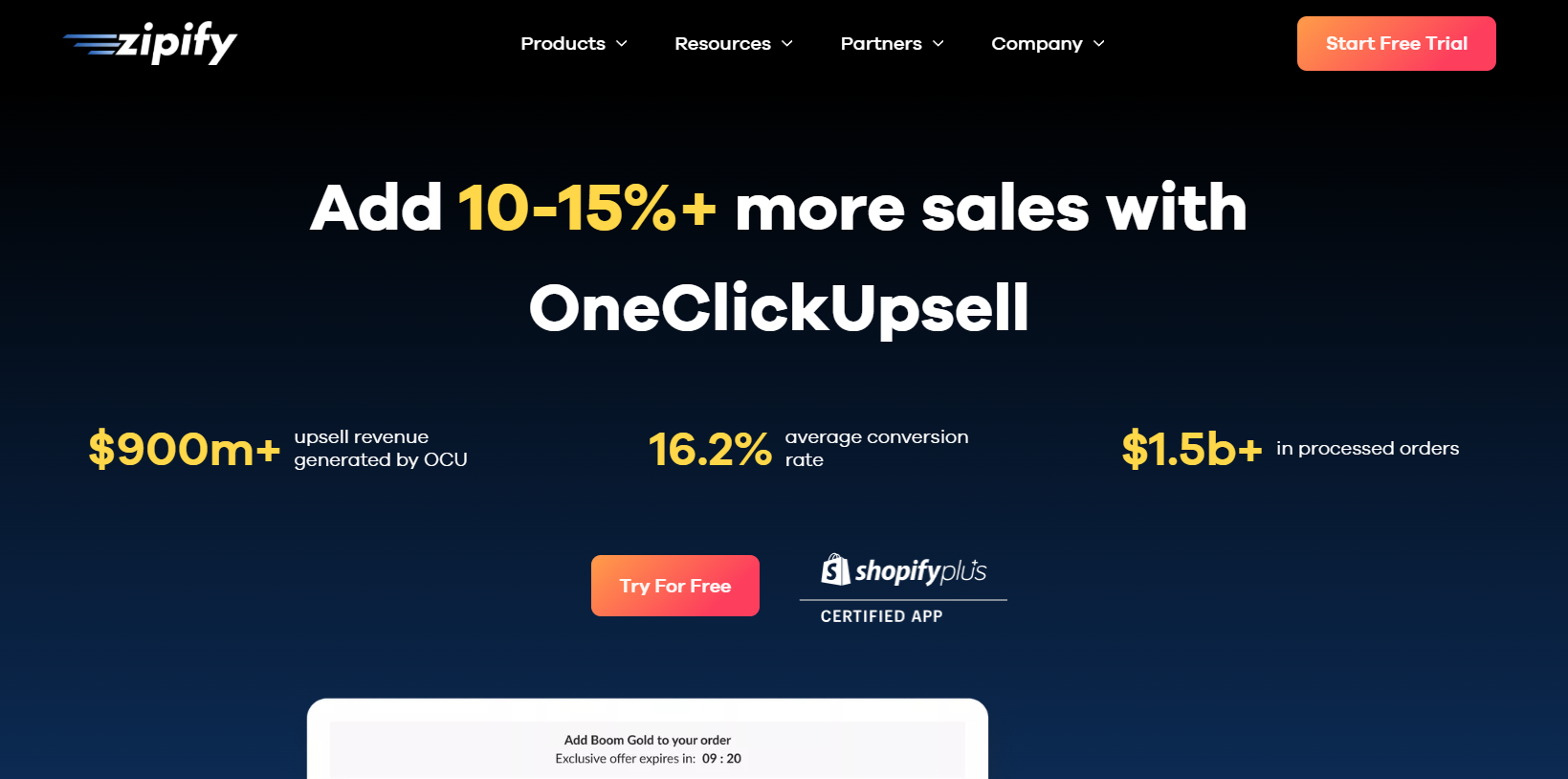
How to Set the Perfect Dropshipping Price For Your Products? (Step-by-Step)
Like my grannie used to say,” for every pot, there is a suitable lit”.
There’s a suitable dropshipping pricing strategy for every product niche, business, and product type.
Since all of them rely on a specific market or target audience, so be free to experiment, even if you don’t succeed initially.
So, let’s see how to determine the best pricing strategies for you! Is it a tiered markup on cost, or maybe psychological pricing?
1. Know Your Customers and Their Buying Habits
Your profits depend on knowing your customers and their buying habits. When you start a dropshipping business, you need to know who your customers are, what they value, and how they spend their money.
Create customer personas with demographics, interests, and pain points, and you can price dropshipping products.
Hence, you can use Google Analytics or Facebook Insights and gather valuable data.
I personally use Meta Ads Library. So, I choose a location, select an ad category, and type in a keyword.

Next, I search for the competitor ad copy. Once I find it, I can get insights about my target audience, like the estimated audience size, the amount spent, the number of impressions, and more.
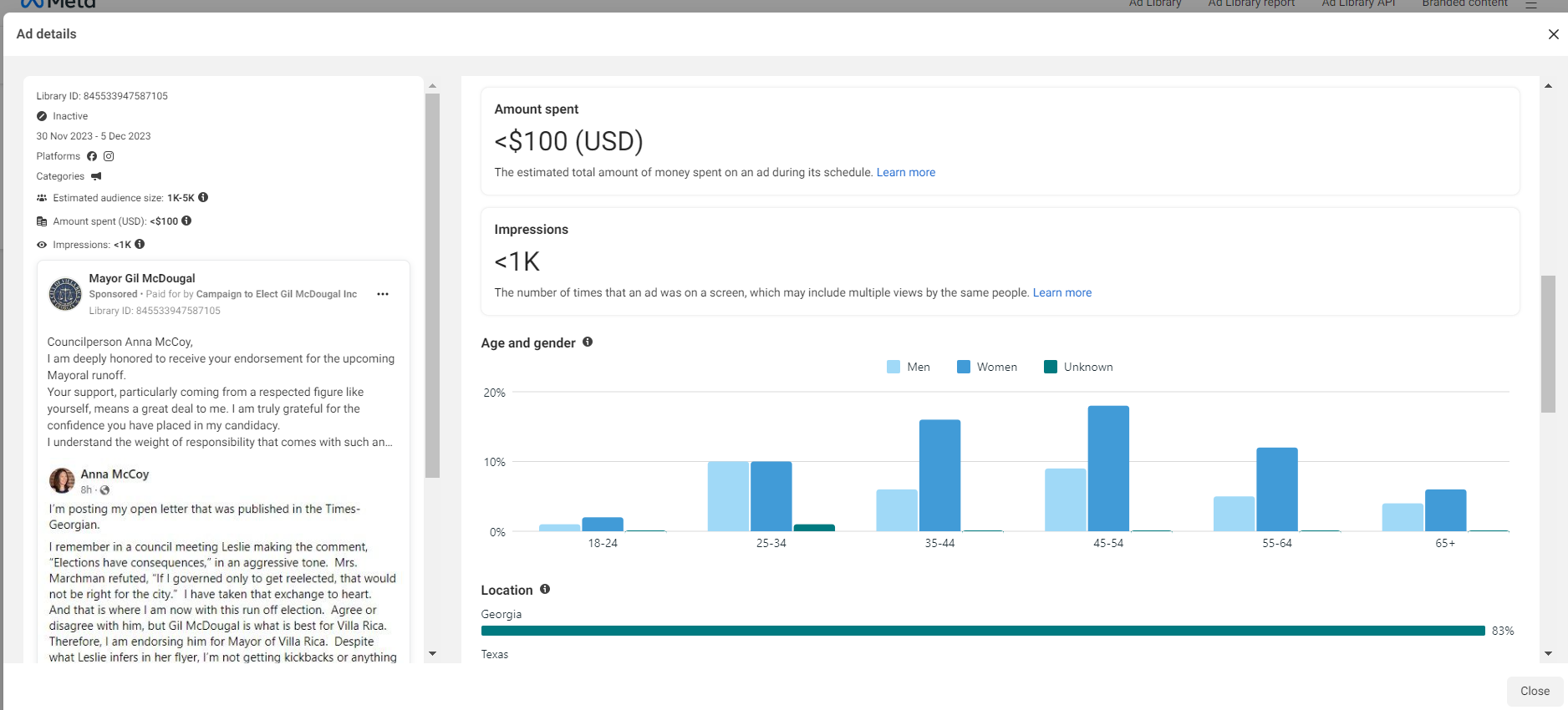
By knowing your customers, you can price your dropshipping products to meet their expectations and needs and make them more appealing.
2. Competitor Analysis
Competitor analysis is key to pricing strategy. Look at how your competitors price their products and what pricing strategies they use.
But don’t copy them—identify their strengths and weaknesses to find opportunities to differentiate.
For example, Similarweb can give you insights into your competitors’ traffic, keywords, and advertising strategies.
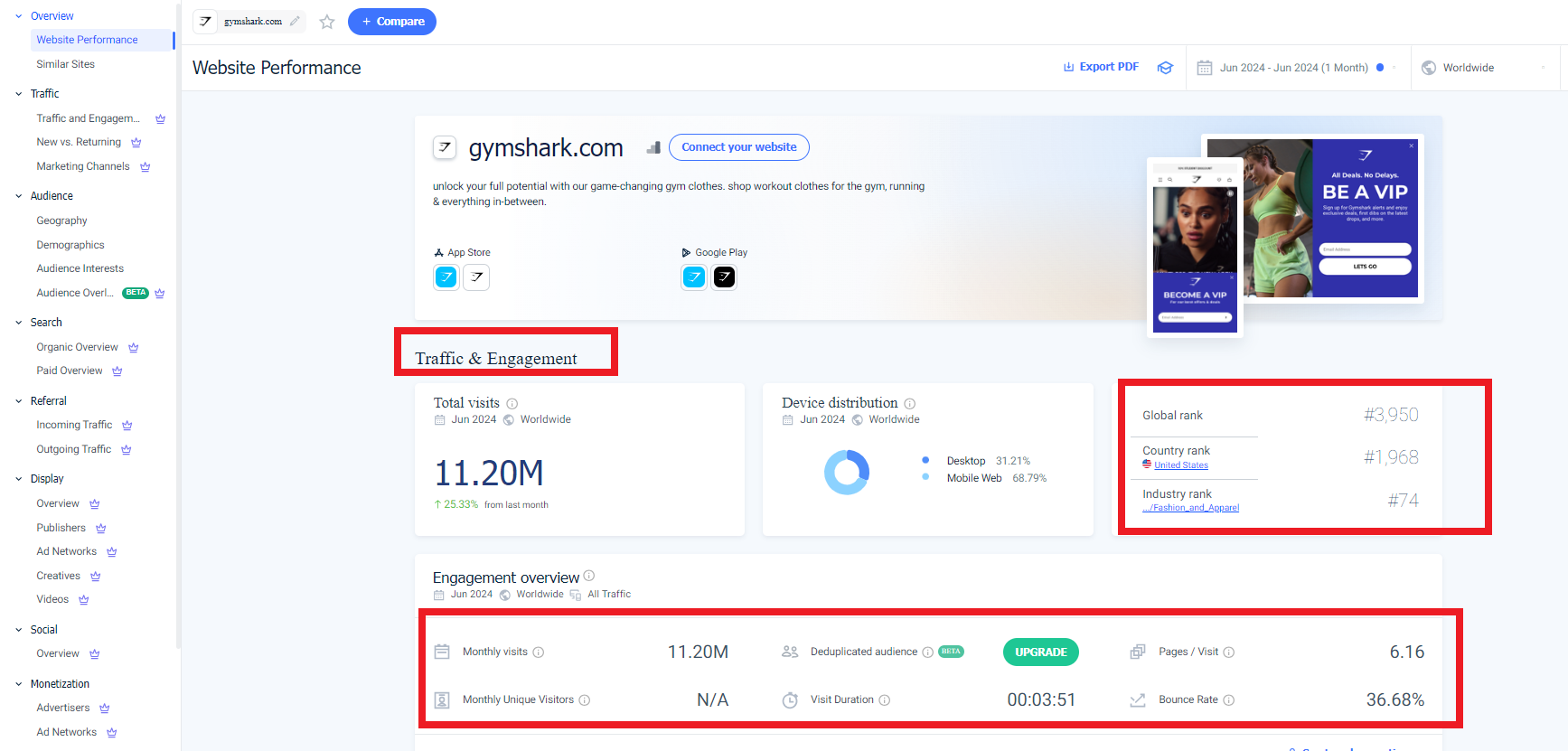
This will help you price competitively and attract customers while offering more value. This is crucial for a dropshipping pricing strategy that wins.
3. Know Your Costs
Knowing your business costs is part of setting your price. Identify fixed costs like platform fees, salaries, and rent and variable costs like shipping, product, and marketing expenses.
Calculate these costs so your pricing covers them and gives you a margin.
For instance, I use QuickBooks to track my expenses and financials.
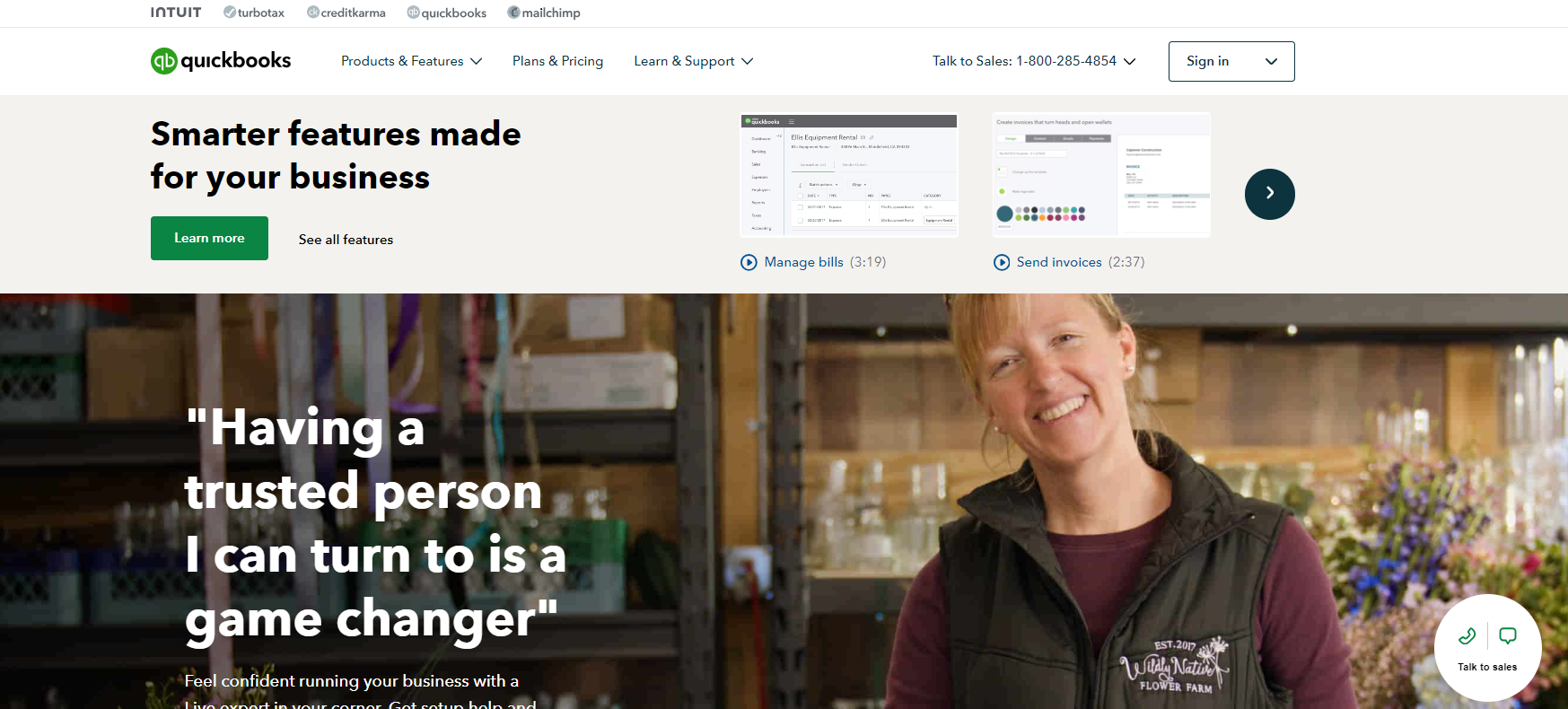
Knowing your costs can ensure that your pricing strategy is sustainable and profitable, which is key to a profitable dropshipping business.
4. Know Your Product’s Perceived Value
Perceived value is key when pricing your product. This means understanding your product’s uniqueness and why customers will pay a premium. Brand reputation, quality, features, and customer reviews all contribute to perceived value.
I suggest you use customer feedback and social media to see how customers perceive your product. Increasing perceived value will justify higher prices and bigger margins for your online dropshipping store.

This is especially important for premium and perceived value pricing.
5. Choose Your Pricing Strategy
It is important to choose the right pricing strategy for your dropshipping store. A common strategy is cost-based pricing, where you add a markup to your costs.
On the other hand, you have different pricing strategies at your disposal, like competitive pricing, where you price based on competitors; and value-based pricing, where you price based on perceived value.
Each has pros and cons, and the best one depends on your target audience and business model.
For instance, Price2Spy can help you monitor and adjust your prices. Knowing market trends and customer expectations will help you choose the right dropshipping pricing strategy.
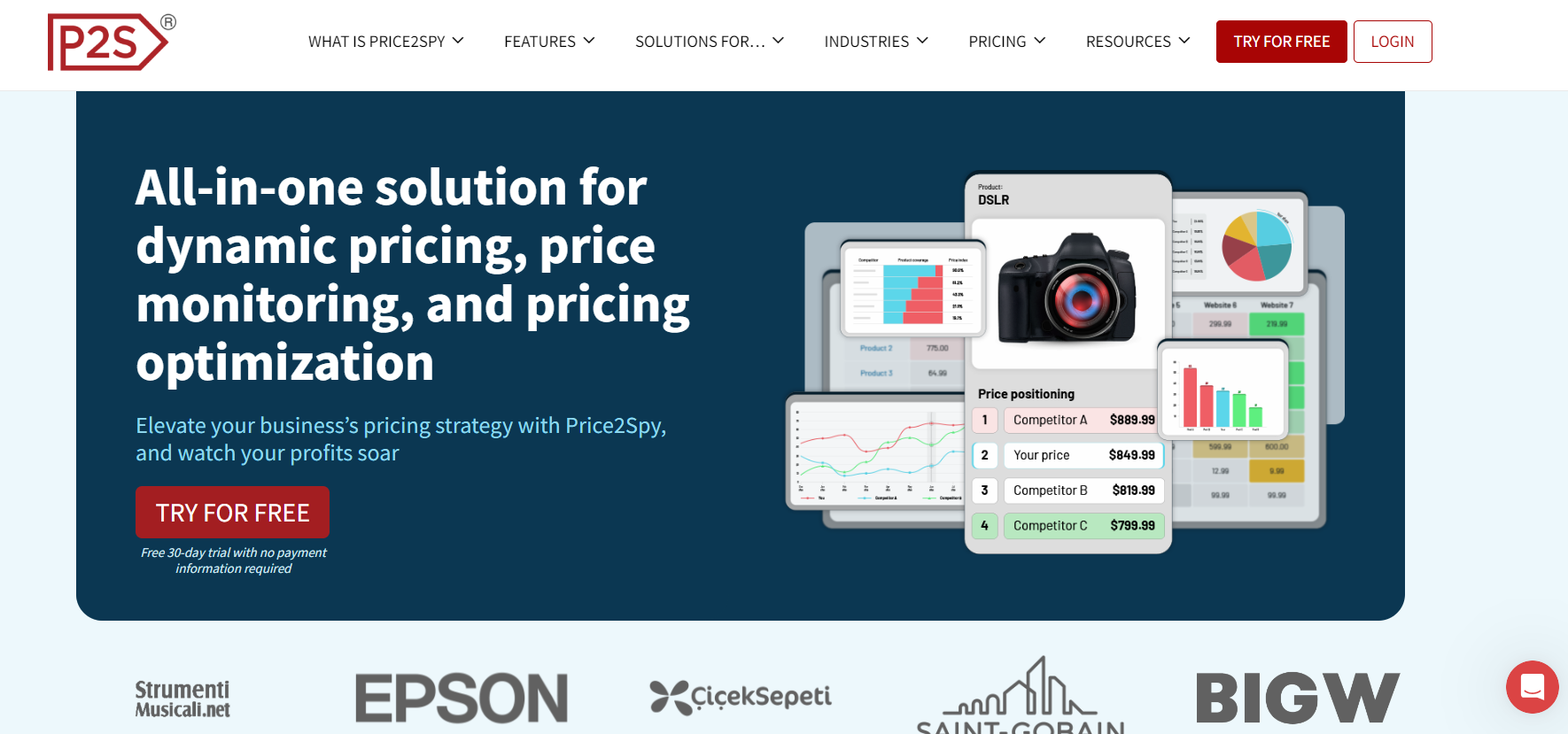
These factors might help you when determining the best price for your dropshipping products. For example, some dropshippers play around with prices like:
- For product prices varying from $0.99-$4.99, they set the selling price at $19.99
- For product prices around $4.99-9.99, they set selling prices around $29.99
As you can see, they put a lot of emphasis on using psychology prices, and they found it successful.
Also, you can realize that they use 3X profit margins. These are usually businesses with many variable costs, so they secure their profits this way. Others use bundling pricing, and most businesses sell skincare and beauty products.
As you can see, it is like that, “for every pot there is a suitable lit”.
What I wanted to recommend to you, which is equally important, is that lower revenues do not always mean lower profits! So stop chasing revenues, but chase your COGS. They might be more important!
Example of How To Price Dropshipping Products
Let me give you an example.
Let’s assume that the maximum revenue for your product is $20, and you will sell 60 pieces at this price. Also, let’s assume that your variable costs are high and your COGS (Costs Of Goods Sold) is $14. So let’s do the math:
Revenue: $20 * 60 pieces = $1.200
COGS: $14 * 60 pieces = $840
Profit: $1.200 – $840 = $360
Now, let’s assume that you have raised your prices by 10%. This means that your selling price will rise from $20 to $22.
Also, in another scenario, let’s say that as a result of this, your sales decreased, and you will see a 10% decrease in sold pieces. This means you will sell 54 pieces instead of 60. All other remain the same. Let’s do the math now:
Revenue: $22 * 54 = $1188 COGS: $14 * 54 = $756
Profit: $1188 – $756 = $432
Your revenue has decreased by $12, but your profit has increased by $72. Are we on the same road now?
So, always try to determine a price from which you will gain maximum profit and not maximum revenue!
What Is A Good Profit Margin In Dropshipping?
Yet, here I am, answering one of the most popular questions: What is a good profit margin for my dropshipping products?
And you are question is right because profit margins play a big role here, they indicate how much of your total sales your business keeps.
So to be realistic, I should start talking about the average profit margin that most dropshippers get.
The average dropshipping profit margin is around 15 % to 20%. However, this depends on the dropshipping niches you choose and the average cost of your products.
To maximize your dropshipping product sales, I recommend aiming for a profit margin even higher than 20%.
However, some dropshippers have profit margins of 100%, or even up to 300%, which, in most cases, depends on what prices you get from your suppliers and, of course, your variable costs.
You can also read more about how to calculate your profit margins by yourself, or if you want, you can use our Profit margin calculator tool
If you are interested in any tips and advice on how to increase your profit margins, I recommend you read this article
BONUS: Top 10 Products To Dropship In September 2024
Pricing Tips From 6-Figure Dropshipping Sellers
Here is a list of additional pricing tips for you to consider using to enhance your dropshipping pricing strategy:
1. Experiment and Adjust Your Prices Up and Down
Pricing is not set in stone in the dynamic world of dropshipping. Successful sellers often experiment with different price points, observing customer reactions and market trends.
For example, if you’re selling a popular gadget, test a slightly higher price to see if customers perceive it as a premium item.
Conversely, lower prices should be considered during special promotions to attract bargain hunters. Regularly adjusting your pricing based on real-time feedback can fine-tune your revenue strategy.
For example, Zara uses this strategy very often to see how customers react to their product prices.

2. Leverage the Power of “FREE”
The word “FREE” has a magnetic appeal for customers. Strategically incorporating this term can enhance your product descriptions and marketing materials.
For example, offer free shipping for orders over a certain amount or bundle a complimentary accessory with a purchase. The sound of no shipping cost really points to charm pricing!
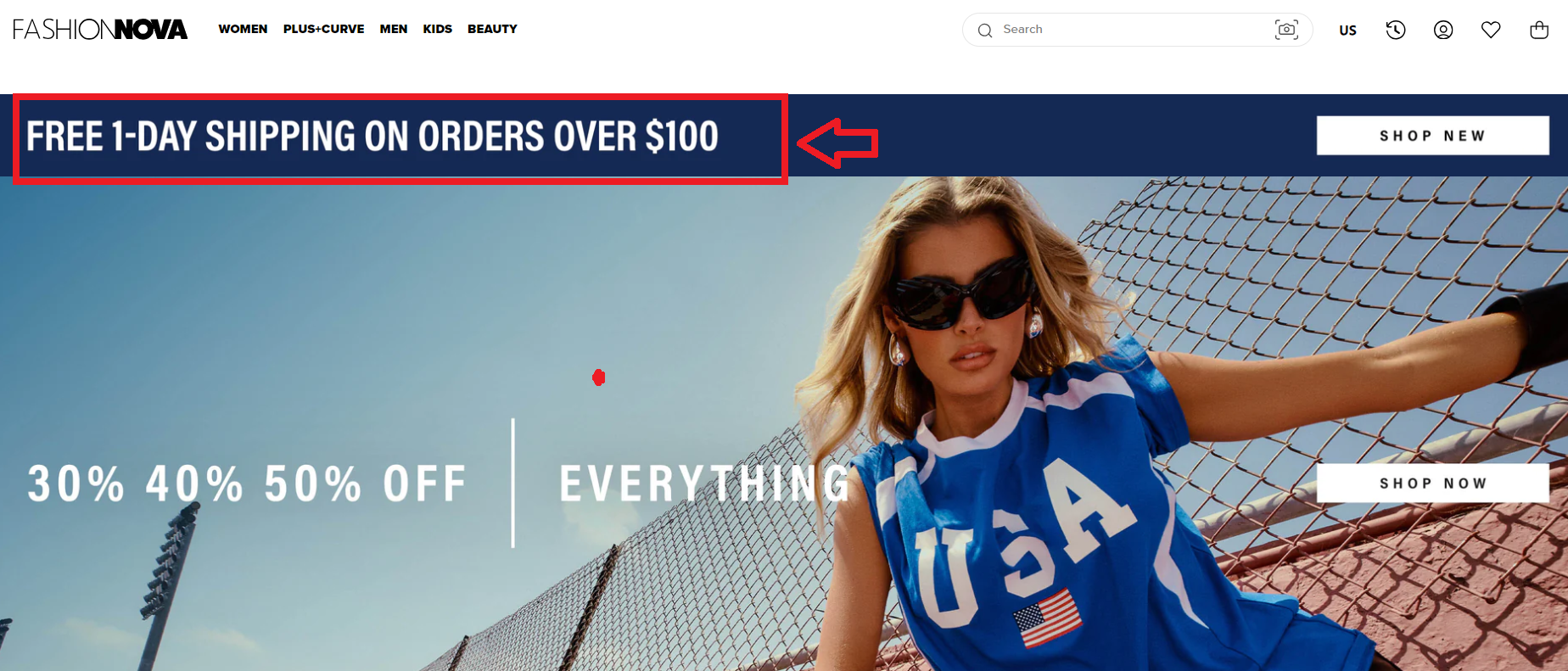
This not only attracts attention but also provides customers with perceived added value, influencing their purchasing decisions positively.
3. Implement Cross-Selling Pricing
Implement cross-selling pricing strategies to encourage customers to explore additional products. For example, bundle complementary items together at a slightly discounted rate when purchased as a package.
For instance, if you’re selling fitness equipment, offer a package deal that includes a yoga mat with a set of resistance bands. Or, if you’re dropshipping books, you can always inform your customers about related books in a certain genre.

This approach not only boosts the average order value but also enhances the overall shopping experience.
4. Opt for Lower Discounts
While discounts can attract customers, offering excessively high discounts may impact your profit margins.
Instead of focusing on steep percentage discounts, consider value-added promotions, such as buy-one-get-one-half-off or tiered discounts for larger orders. This way, you maintain perceived value while protecting your profitability.
5. Create a Sense of Urgency
Incorporate urgency-inducing language to prompt quicker customer actions. Thus, phrases like “Limited Stock,” “Last One in Stock,” or “Flash Sale” create a sense of scarcity and encourage customers to make prompt purchasing decisions.
This psychological trigger taps into the fear of missing out (FOMO), prompting potential buyers to act swiftly before the opportunity vanishes.
For example, this strategy is pretty familiar to WizzAir and Booking. Check this out.

By integrating these product price tips into your dropshipping strategy, you can create a more dynamic and effective approach that aligns with customer behavior and market dynamics.
3 Tools to Analyze Competitor Pricing: Improve Your Dropshipping Pricing Strategies
Understanding competitor pricing is critical to staying competitive in the dropshipping market. By leveraging advanced tools, you can refine your dropshipping pricing strategies and ensure you’re offering the best pricing for ecommerce. Below are three powerful tools, complete with pricing information and examples of how they can be applied to improve your pricing model.
1. Google Shopping: Benchmark Prices and Identify Trends
Google Shopping allows you to compare competitor prices and identify trends in real-time. It’s a free tool that gives dropshippers valuable insights into pricing fluctuations and product demand. By researching similar products, you can refine how to price dropshipping products while ensuring your prices remain competitive.
Pricing/Subscription: Free to use, but you need to set up a Google Merchant Center account and link it to your store. Running ads on Google Shopping requires a paid budget.
For example, let’s say you are selling Bluetooth headphones. So, you can analyze the top 10 listings on Google Shopping and discover that most competitors’ prices are between $29 and $35. To stay competitive, you can set your price at $32.99 while offering free shipping to increase conversions and ensure that your product ranks well.
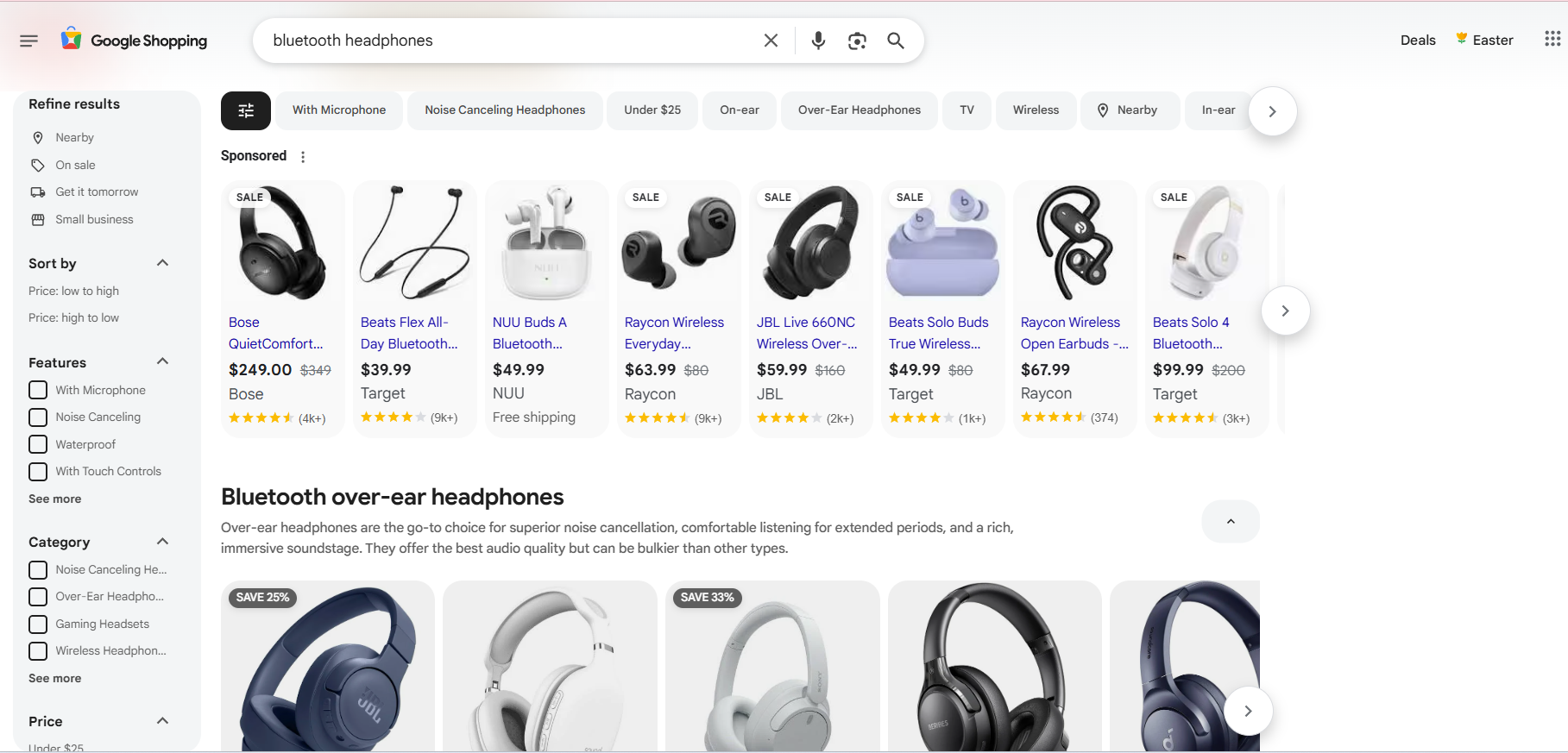
2. PriceSpy: Track Historical Pricing Data

PriceSpy aggregates pricing data from multiple ecommerce sites, allowing you to view pricing trends and historical data for various products.
This tool is perfect for identifying COGS for beginners by giving insights into price fluctuations over time.
Pricing/Subscription:
Free to use for basic price comparisons. For businesses and advanced analytics, PriceSpy offers customized pricing depending on data requirements.
3. Sell The Trend: Analyze Winning Products and Their Pricing Models

Sell The Trend is a powerful competitor research tool that identifies trending products and analyzes their pricing models.
It provides detailed insights into winning dropshipping products, helping you refine your dropshipping pricing formula and increase dropshipping sales.
Pricing/Subscription:
Starts at $49.97/month for basic features, with a higher-tier plan at $99.97/month offering additional advanced analytics and AI product recommendations.
Why Profit Margins Matter More Than Revenue? The Key to Long-Term Success in Dropshipping
Focusing on high revenue without considering profit margins is a risky strategy. While generating more sales sounds appealing, businesses that ignore profit margins may struggle with sustainability. Understanding how to price dropshipping products with a focus on profit margins ensures consistent growth and scalability. Below are three examples that illustrate why profit margins matter more than revenue in dropshipping.
1. Low Margins with High Revenue Can Lead to Losses
A dropshipper selling trendy fashion accessories prices their products too low to stay competitive, generating $10,000 in revenue in one month.
But after deducting the cost of goods sold (COGS), shipping, and ad spend, they’re left with only $300 in net profit.
Despite high revenue, razor-thin margins leave the business vulnerable—any increase in ad costs or supplier fees can quickly wipe out profits.

This leaves just $0.99 in profit per sale, barely breaking even after scaling. Even a small bump in ad costs could lead to losses, making the business unsustainable.
2. High Margins Lead to Stability Even with Fewer Sales
A dropshipper focusing on eco-friendly water bottles chooses to prioritize higher margins instead of chasing high revenue.
They price the bottles at $29.99, with a COGS of $8 and marketing costs at $6 per sale. This results in a profit margin of over 50%.
Even if they make fewer sales than competitors, their higher profits provide a buffer against fluctuating ad costs or unexpected market shifts, keeping the business stable and profitable.

3. High Revenue Without Margins Can’t Sustain Ad Costs
A dropshipper scaling a successful product through Facebook ads generates $25,000 in monthly revenue but struggles to stay profitable. Their ad spend consumes 60% of their revenue, leaving little room for error. Even slight increases in ad costs lead to losses, demonstrating that focusing solely on revenue puts the business at risk.
For example, a seller running Facebook ads sells smart home devices at $59.99 with a COGS of $25 and ad costs averaging $30 per sale. After deducting operational expenses, they realize their profit is less than $2 per order, making it impossible to reinvest and grow the business sustainably.
How To Price Dropshipping Products – FAQs
Frequently Asked Questions: Dropshipping Pricing
How It Works:
- Understand all costs, including sourcing, shipping, platform fees, and marketing.
- Analyze competitor pricing but avoid copying them.
- Consider customer-perceived value to determine what the target market is willing to pay.
- Choose a pricing strategy such as cost-based, competitive, or value-based pricing.
- Set a price that covers costs and offers a profit margin.
Formula:
Price per Sale = Total Sales Revenue / Number of Units Sold
Example:
If I earned $500 from selling 50 units, the price per sale would be:
$500 / 50 = $10.
How It Works:
- Calculate total costs (product, shipping, platform fees, and marketing).
- Set a reasonable profit margin.
- Analyze competitor pricing and market trends.
- Choose a pricing strategy that aligns with my business goals.
- Adjust pricing based on customer feedback and performance.
How It Works:
- Subtract all costs (product, shipping, platform fees, marketing) from the selling price.
- Example: If I sell a product for $50 with total costs of $30, my profit is $20.
How It Works:
- Markup typically ranges between 20% to 50%, depending on product and market conditions.
- Example: For a $20 product, a 30% markup results in a selling price of $26.
Best Practices:
- Review prices regularly based on market trends and competitor actions.
- Adjust during peak seasons to take advantage of increased demand.
- Use pricing tools like Prisync or Price2Spy to automate changes.
- Re-evaluate pricing when supplier costs or shipping fees increase.
How It Works:
- Bundle shipping costs into the product price to offer “free shipping.”
- Set minimum order thresholds to encourage higher order value.
- Ensure the total price covers costs to maintain profitability.
How It Works:
- Use dynamic pricing tools to adjust prices based on exchange rates.
- Research local competitors in different regions to stay competitive.
- Factor in cross-border taxes and duties by adding a buffer (around 10-15%).
Formula:
Total Costs ÷ (1 - Desired Profit Margin)
Example:
If total costs are $12 and I want a 20% profit margin, the minimum price should be:
$12 ÷ 0.8 = $15.
What is it?
Taxes and customs duties are additional charges applied to products sold across international borders. These charges can include VAT (Value-Added Tax), GST (Goods and Services Tax), and import duties.
How It Works:
- Include VAT/GST or Sales Tax: If I’m selling in regions where it’s legally required (e.g., EU’s IOSS system), I need to either include these taxes in the product price or add them at checkout.
- Pre-calculate Customs Duties: Tools like DutyCalculator can estimate import taxes and duties. I can decide whether to absorb these costs or pass them on to customers.
- Display Taxes Transparently: To avoid cart abandonment, I should display all applicable taxes and duties clearly at checkout. Hidden fees can discourage buyers from completing their purchase.
Example:
If I sell a product to an EU customer for $100, and the VAT is 20%, I can either:
– List the item at $120, including VAT.
– Show the base price as $100 and apply the 20% VAT at checkout.
Conclusion
Pricing your dropshipping products correctly is more than just adding a markup — it’s about balancing costs, competition, and perceived value to maximize profits.
By applying the right dropshipping pricing strategies, you ensure that your business stays competitive while maintaining healthy margins.
Whether you opt for cost-based pricing, psychological tactics, or dynamic adjustments, understanding your market and analyzing competitor trends is key.
Remember, profit margins matter more than revenue in the long run. Master these strategies, track your costs, and continually refine your pricing to achieve sustainable growth in your dropshipping business.
















![The Top 21 3PL Companies Compared [2025 List & Guide]](https://images.weserv.nl/?url=https://prod-dropshipping-s3.s3.fr-par.scw.cloud/2024/03/Frame-3922469.jpg&w=420&q=90&output=webp)